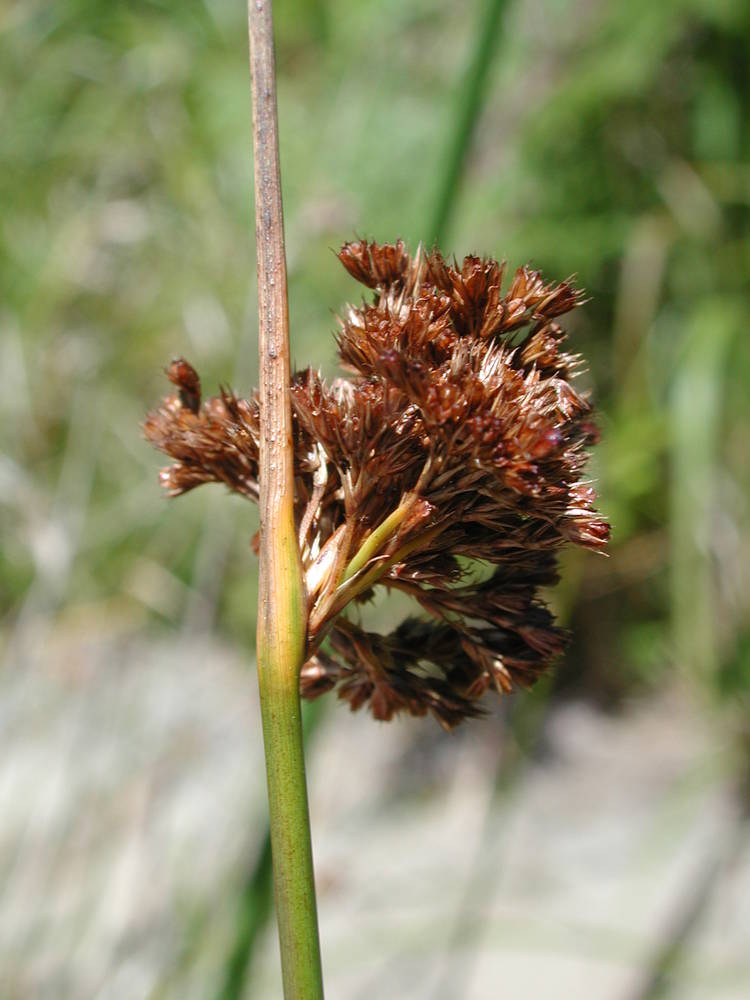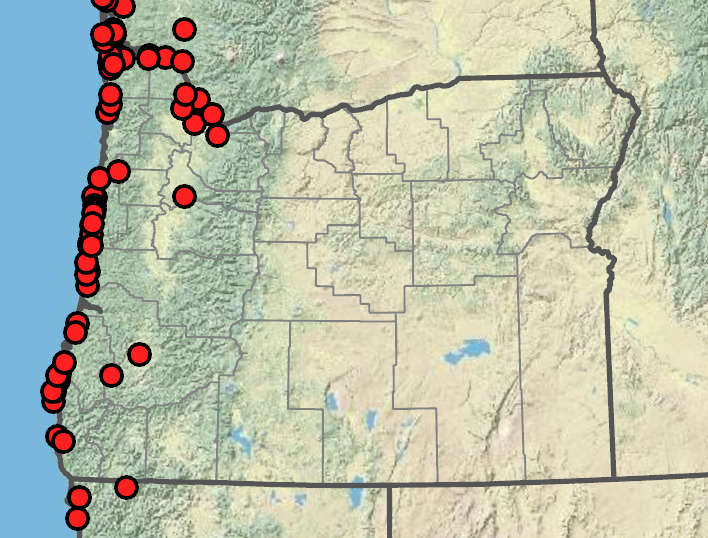Juncus hesperius
bog rush, coast rush
lacking blades;
distal sheaths 4–20 cm, green (fresh) to pale or medium brown (dried); dull to slightly shiny, papillose;
apex usually strongly asymmetrical on fruiting stems; thin, with broad membranous wings, flattened and lacking raised rims.
a loose to dense cluster;
branches usually visible;
inflorescence bracts not swollen; erect.
tepals 6, dark brown-striped;
stamens 3;
filaments 0.5–0.6 mm;
anthers 0.5–0.8 mm;
styles 0.05–0.1 mm.
2–2.7 mm; shorter than the tepals, brown to dark brown;
apex acute to notched or obtuse, 1-chambered.
0.4–0.5 × 0.2–0.25 mm, reticulate, apiculate.
Juncus hesperius
Shores, springs, swales, peatlands, wet pastures, cranberry farms, ditches. 0–800m. CR, Est, WV. CA, WA; north to British Columbia. Native.
This species rarely hybridizes with J. laccatus. Montane J. exiguus has a symmetrical sheath apex and smooth sheath, differing from the more coastal J. hesperius, which has an asymmetrical sheath apex and papillose sheaths.
Peter Zika
- Local floras:
BC,
CA,
OR,
WA
- Local Web sites:
CalFlora,
CalPhotos,
Flora NW,
PNW Herbaria
WildflowerSearch
iNaturalist (observations)
- LBJ Wildflower Center
- SEINet
- Plants of the World Online
- Encyclopedia of Life
- Wikipedia
- Google Image Search

